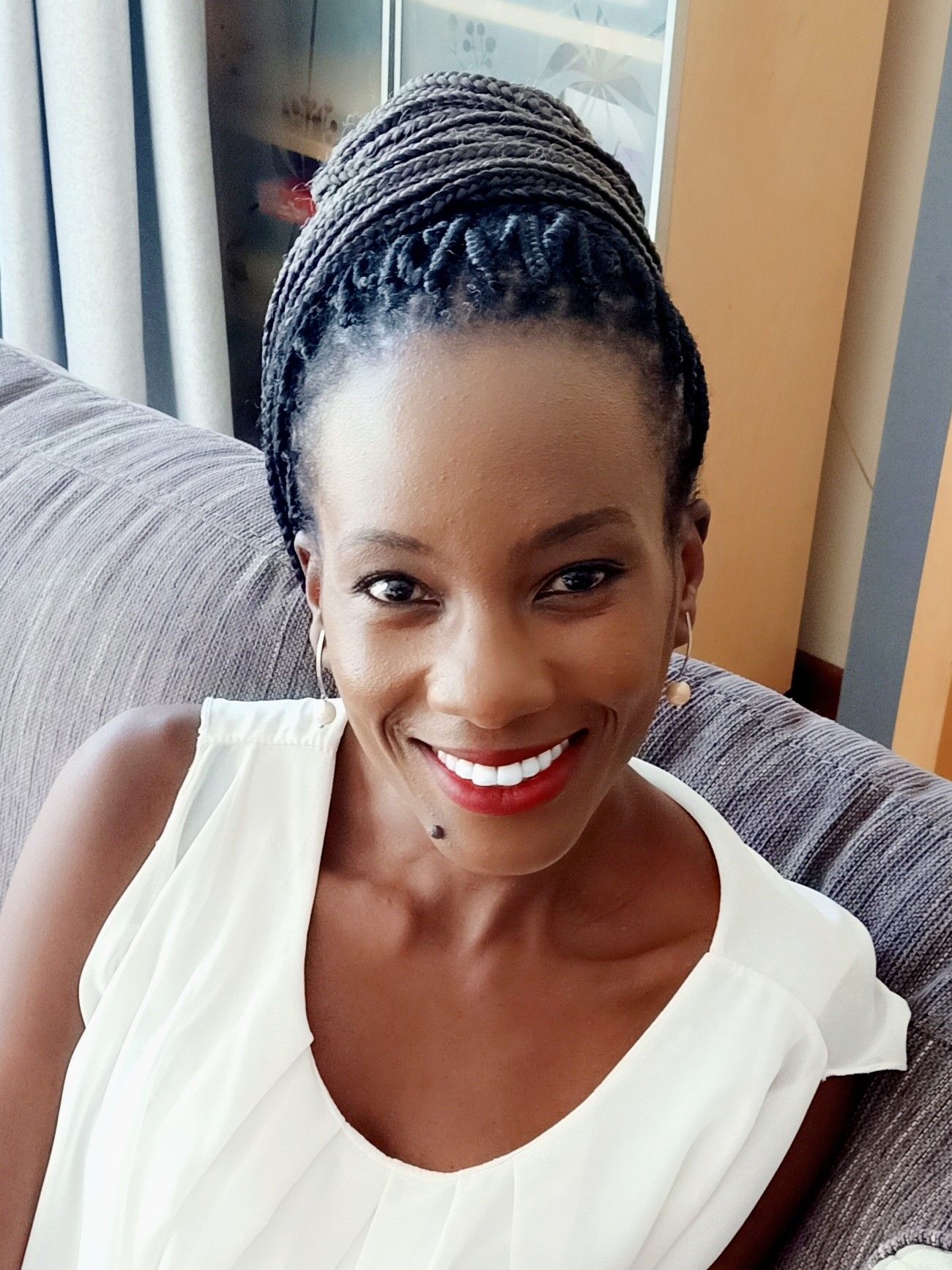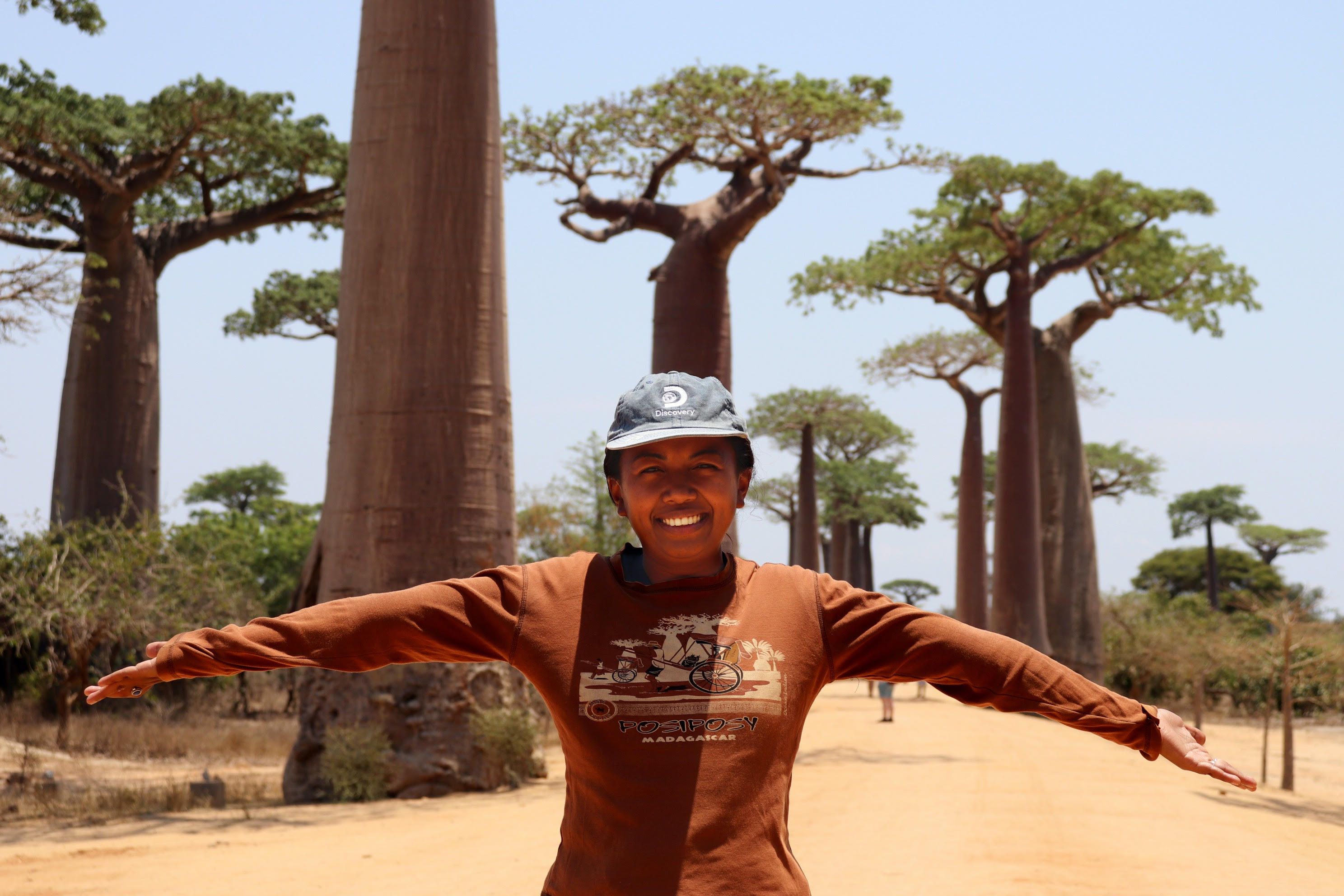I recognise that different situations call for different approaches. In our context, what has worked is the gentler way.
Nalaroi. This is Belinda Low Mackey's adoptive Samburu name. It denotes wealth, an appropriate tribute given the value that her organisation, Grevy's Zebra Trust, has brought to the Northern Kenyan rangelands.
In recognising that healthy land was critical to conserving the endangered Grevy's zebra population, Grevy's Zebra Trust's approach has been one of listening, learning, adapting and evolving—which is unprecedented in many ways.
Over the years, the co-founder and executive director of Grevy’s Zebra Trust has developed her organisation's capacity to support resilient practices and help communities adapt to modern realities so that they can protect their resources.
Today, Belinda and her team are working to scale their solutions and help others replicate their success story.
The Women for Environment 2022 fellow shares insights from her journey with Damaris Agweyu.
Belinda, if you could wave a wand and change one thing in the world, what would that be?
If I could change one thing, it would be to have more people sharing their feelings and fears. If we allowed ourselves to be more vulnerable, I think the world would be a much better place.
Do you permit yourself to be vulnerable?
More and more.
When I started Grevy's Zebra Trust, I was pretty armoured, wanting to control everything. As the organisation grew and I continued to evolve, I realised I could neither control nor manage everything. And so I started letting other people in, trusting that they could do it. As soon as I took that leap of faith, I got an amazing sense of freedom.
A lot of founders struggle to let go.
My ultimate wish is that the organisation is entirely led by indigenous Kenyans. It’s been exciting to witness the growth of the amazing men and women I’ve walked this journey with and to see the experienced leadership and stability they bring to the organisation. At the same time, I am witnessing how new team members bring new perspectives and possibilities. It’s a blend of that deep experience and that new energy that excites me for what it can bring to the leadership of the organisation going forward.
What is your origin story in the world of conservation?
I was born and raised in Kenya until 11 when I left for boarding school in the UK. Spanish was one of the languages taught at this boarding school, and I loved it. I ended up doing it at A level. In retrospect, the A-level system is very limiting because you have to decide what to specialise in when you're still so young. At 16, many kids don't necessarily know what they want. I was among those that was pigeonholed into doing the stuff I was good at.
At the university level, I chose Hispanic studies. My classmates went to Spain for a year, but two of us decided to go to Ecuador, which was incredible. I lived with an Ecuadorian family, which exposed me to a completely different culture and revealed new perspectives. I will always be grateful for this incredible experience as I believe it helped shape my holistic way of seeing the world.
Later, I moved to Bolivia, where I taught English as a foreign language. My boyfriend at the time was doing his fieldwork in agroforestry. My curiosity about the work he was doing led me to ask myself many questions and reconnect me to what I wanted to do with my life: come home and fulfil my connection with nature, something I'd felt from an early age.
It was a conversation with my boyfriend's supervisor, which changed the course of my life. He was the quintessential American dreamer and urged me to do a Master's degree in conservation biology. I had never thought it was possible since I had chosen a languages and arts path. Still, I took a chance, applied to a couple of institutions in the UK and was accepted to study conservation biology. It was an incredible year. I was on fire, because I was finally aligning with my purpose, and there is nothing more motivating than working towards your dream. I graduated with a distinction.
Returning to Kenya, I was incredibly fortunate to meet a professor from Princeton University, Dan Rubenstein, who became one of my academic mentors. I worked as his principal investigator for his Zebras of Kenya Earthwatch project at Lewa Wildlife Conservancy. I ended up connecting to conservation in a meaningful way and falling in love with Grevy's zebra.
What made you fall in love with the Grevy's zebra?
If you look into their eyes, you'll see a knowing there. It's like they're old souls.
On matters wildlife conservation, your organisation has done things differently than most.
I studied Grevy's zebra quite intensely and saw how special they were. I couldn't believe how endangered they were. I learned that the challenges they face in their habitat are the same challenges faced by the people who live around them, and thought if we addressed those shared threats, then everyone wins.
So very early on, we realised that if we were going to expect the Grevy's zebra to survive in the long term, people's well-being had to go hand in hand with their conservation.
There can be a tendency by others to blame local cultures for environmental issues. You'll hear comments like, “they have too much livestock”. They fail to understand that the relationship pastoralists have with their animals is spiritual as much as it is economic, and that pastoralism is actually the most sustainable and resilient form of land use in arid and semi-arid environments, and the most compatible with wildlife conservation.
It was essential for us to devise approaches that ensured local communities owned this work, even if Grevy's Zebra Trust wasn't there. To a large extent, we are succeeding. Today, we have over 100 employees, and more than 93% of our team are from the communities living with Grevy's zebra.
Can you share some specific strategies that have worked?
The end goal was to have pastoralist communities plan their grazing so that there's a recovery time for plants which support their livestock. It's a complex issue with the advent of development that has brought permanent infrastructure to the landscape—people are settling in one location permanently, which leads to overgrazing. So we've worked with community members to map out grazing blocks for their livestock.
So far, we've taken three villages through the complete cycle of our theory of change if you like. And we've seen the impact. Despite the ongoing drought, these villages have continued to have grazing throughout most of the year. Pastoralists have driven it. Our role has been to facilitate the visioning process by asking questions about the quality of life they want and then co-creating solutions to support their visions.
Initially, we only worked directly with elders, which limited the impact. And so we established village-based committees, which are committees comprising two elders, two women and two young people (warriors). It was essential to include all the demographics because while male elders are the leaders in a traditional community setting, other groups' voices are not necessarily heard. We especially wanted to listen to what women and young people feel about issues. Giving them a safe space to speak openly has helped.
So in our workshops, we hold separate sessions with elders, women and warriors. Participants draw from their perspectives and experiences to help design the best solutions. And then, at the end of it, we bring their elected representatives together for collective visioning.
One of the biggest turning points was in 2019.
We held a 5-day intensive training program on how to improve rangeland health, just for women. As a result, 3 of these women took ownership of land restoration back in their villages, initially mobilising other women and slowly being joined by the whole community. One of the reasons they are attached to it is because their sons are the warriors that graze the cattle. Sometimes, because of deadly conflicts, they never return. Ensuring that there is grass is a deeply emotive issue for the women and their leadership on this issue has been a huge catalyst for change, with other villages starting their own restoration efforts.
We've also learned the importance of voluntary leadership through these committees. Because if people are paid an allowance, they are driven by something other than the cause. When it is voluntary, and the whole community is behind it, that is when you have genuine ownership, and it’s been amazing to see the pride of the people in their work.
What is it about your leadership style that made this work?
When I started working with communities, I was young and naïve. Thankfully, I had an amazing mentor, James Munyugi. When it came to community meetings, he taught me how to listen.
Added to this is my ability to see the big picture and connect the relationships between everything. I've been able to translate what's in my head to the team, and my role has been to make suggestions and evaluate the uptake. I don't push things. I let them grow organically.
Holding community meetings with different demographics and then bringing them together has driven massive change. It means that no one is left out.
If we expect behavioural change, we must cultivate an environment where everyone feels heard. It's a co-created model that has been amazing to watch and participate in.
How did you get their buy-in as someone who doesn't come from the community?
The people in northern Kenya are incredibly welcoming. And in some way, my neutrality is a benefit. I don't have an agenda in terms of my clan or my tribe. My agenda is Grevy’s zebra, the environment and people's well-being. And people can sense whether you're genuine or not.
What has the WE Africa journey revealed for you?
Learning the standpoint theory has been really eye-opening. It helped me appreciate the bigger barriers we face in Africa as women, especially black African women.
I'm now fully aware of how, based on colour, I have been blind to so many things. Hearing my sisters’ stories on the WE journey woke me up to some horrendous experiences other women have faced. These systemic challenges are around us, we've grown up with them, but until you go through an experience like WE Africa, you just accept them. You know they are not ok, but it's easier not to confront them. They are now at the forefront of my consciousness and have lit a fire in me.
Reflecting on my journey, I'm grateful that I have always had a holistic way of seeing things. Because the work that we've done has been very inclusive in many ways. I recognise that different situations call for different approaches. In our context, what has worked is the gentler way.
What do you struggle with most?
Self-love. I have to be intentional about it. I am actively working on it with my WE Africa coach.
What's next for you?
As part of my work with the Grevy's Zebra Trust, I'm excited to share our successes—our work’s inclusive approach—in other circles, with the idea that it could be adapted for other African landscapes. I also want to grow my coaching skills in more courageous and compassionate leadership.
I've realised that as my daughters get older, they need me more, so I want to create more space for them in my life.
And I really want to inspire and support other women, so I'm keen on becoming an active member of the WE Africa movement. I want to contribute towards an inclusive and just future for women and our planet.
***
This interview is part of a series profiling the stories of the 2022 WE Africa leadership programme fellows, African women in the environmental conservation sector who are showing up with a strong back, soft front, and wild heart.



